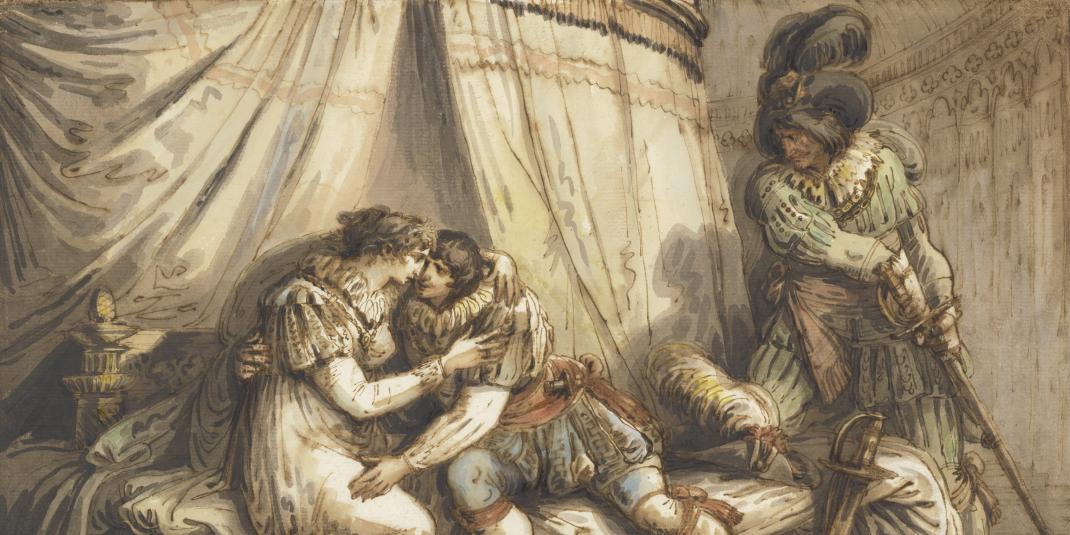
Felice Giani (1758-1823)
Paolo and Francesca Surprised by Gianciotto Malatesta, 1805
The drawing by Felice Giani enhances the rich holdings of The Kupferstichkabinett – the Kunsthalle's department of prints and drawings of art created around 1800. This acquisition produces links that enable us to draw comparisons between the works of German draftsmanship from the 18th and 19th century and Italian art from the same period. In this way, the museum's main fields of collection are being extended and supplemented by new, international perspectives.
Felice Giani (1758–1823), who was born near Alessandria, Piemont, was a painter, draftsman and frescoist, who had dealt intensively with mural painting in classicist Rome. In the first decade of the 19th century, he made a series of drawings on the medieval poem Divina Commedia (Divine Comedy) of Dante Alighieri.
The drawing represents an episode of the fifth song from the first main part of the poem. Francesca da Rimini and Paolo Malatesta fell in love with each other after having secretly read the love story of Lancelot and Ginevra. Francesca, however, is married to Gianciotto Malatesta, who is Paolo's brother and ruler of the city of Pesaro. Sooner or later, Gianciotto discovers the betrayal of the amorous couple and, filled with rage and envy, kills them. Giani’s drawing depicts the moment in which Gianciotto grasps his sword and threatens the unsuspecting couple Paolo and Francesca, to subsequently kill them both.
What is described in a sober and solemn manner in Dante's poem, is rendered rather vividly in the drawing. The fluidity of style, the exaggerated proportions of the figures and the anti-classical, theatrical pose of the lovers make this drawing a perfect example of the so-called Troubadour style.








